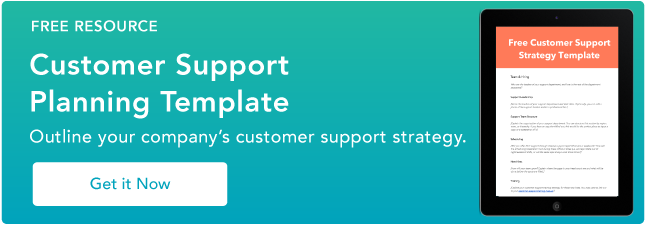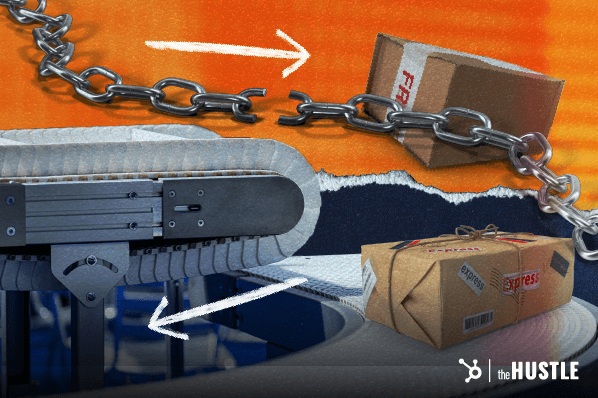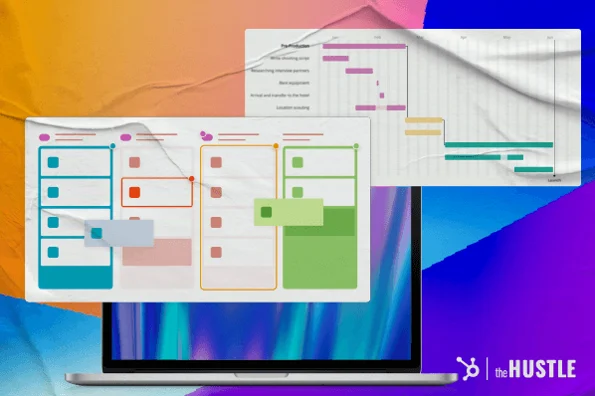When you have a busy day ahead of you, some people like to plan things out. You know you have to be at a dinner reservation at 7 pm, so you work backward. It takes 30 minutes to get there, meaning you have to leave home at 6:30, which means you have to start getting ready for dinner at 5:45, so you have to shower at 5:30, and so on.
If you haven't ever done this, then you're probably quite punctual. But, if you're like me, you need a set process in place to plan out the logistics of your entire day.
Similarly, SaaS companies, need to create a plan for the release of a new product to ensure everything gets completed on time. This process is called release management.
In this post, we'll discuss what release management is as well as some best practices you can apply to your business. Then, we'll wrap things up by listing some of the top release management tools available this year.
→ Download Now: Free Product Marketing Kit [Free Templates]
Think of release management as an itinerary for building new products. It lists out all of the things you're going to do in the order that you're going to do them. When you complete each step, you can check it off and move forward to the next one. That way, there's no wasted time between steps and you complete the itinerary much faster.
Now that you're familiar with release management, you may want to adopt a process for your production team. In the next section, let's look at the steps you'll need to take to create a release management process at your business.
Release Management Process
The release management process typically consists of the following seven stages:
1. Approve the proposed changes.
Before you can begin developing a new product or updating an existing one, the proposal should be approved by management. If it hasn't been assigned by a manager, you'll want to put together a synopsis of the project highlighting the perceived need for this release. The plan that you create in the next step can also serve as your proposal.
2. Plan the project's release.
The next step is to determine how the entire release will occur from start to finish. It's important to set up a plan with achievable goals so your team can stay on track. This plan should include deadlines and timelines, checklists, and the requirements for the end goal.
3. Build the product.
After finalizing your plan, you can start developing your product release. This process will last until the product is perfect -- or as close to it as possible.
It's important to note that this stage gets interchanged with the following step. As a product gets built, it gets sent out for user testing. Based on the results, the product is sent back to development for necessary changes. The goal of this back and forth is to build a product that optimizes user experience.
4. Test the product.
Throughout product development, you should submit the product for user testing and obtain feedback from your target audience. After all, your product is being built for customers, not for internal employees. It's not about what your developers believe, it's about what customers are saying about your product. Therefore, you should be testing your product until your customers are happy with the results.
5. Review the product for quality assurance.
After you've used your testing results to perfect your product, it should be submitted for a final quality assurance review. This review ensures the product meets the requirements laid out in the release plan. The product should be bug-free and ready to be used by customers. This is tested by mimicking possible uses for the product in hopes of discovering overlooked flaws.
6. Release the product.
Finally, the product will be released on the date you scheduled in your release plan. Of course, something as monumental as a new product release should be widely advertised to your target audience. In the case of product updates, users should be notified of the change and educated on how to navigate it.
Additionally, your employees should be educated on how to use the new product, especially if they work in customer-facing roles like customer support or success. When customers reach out for help, they should feel like your team has been working with the feature for months. Since your business created it, your team needs to the experts when customers require support.
7. Review performance
After releasing the product, your team should research how the product is performing. The team should also discuss how the release plan was executed. Were you right on schedule or did you fall behind? Did you have to endure extensive rounds of testing or was the product up to par after a couple of sessions?
Make note of these discoveries for the next round of product development. If the product ends up performing poorly, you may have to return to the drawing board and begin an entirely new release management process.
While these steps should ensure high-quality products are released on time, following the best practices below will continue to strengthen your release management process and leave less room for errors.
5 Release Management Best Practices
1. Define team roles.
As with any business function, it helps to have a team dedicated to guiding the release process. Most importantly, you should appoint a release management leader who will oversee the entire process. They should be a member of product development or another employee who understands the ins and outs of software development.
2. Understand the project's objectives.
Your team should define clear goals and objectives for your release management process. That's because the more you describe the project, the less likely they'll encounter misinterpretation or confusion. Clear objectives also ensure that every member of the team understands what the end result should look like and accomplish.
3. Plan for crises.
No matter how strong your release plan is, there's always the chance that something will go wrong. As in any crisis management situation, you want to be prepared for the worst so you have an actionable plan to set in motion. You should plan how you'll respond in the face of a disaster and consider how it will affect the release of the final product.
4. Implement automation.
You may prefer to complete tasks manually or by hand, believing it gives you more control over the end result. However, this leaves product development at risk of human error. When possible, you should implement automation to save time and limit the chance for errors.
5. Only make changes when necessary.
While product development is an essential part of a software company, you only want to make changes when necessary. The more you modify the code, the more opportunities there are for mutations and bugs to appear.
Now that you understand how release management works, you may be interested in getting some help with your new plan. Luckily, there are plenty of release management tools that can automate and organize your team's daily workflow. Take a look at the section below for some useful release management tools you can adopt to create a successful release management process.
1. Plutora
Plutora's software helps businesses deliver product releases in an extremely efficient way. You can build schedules, manage changes, integrate existing product team tools, and view analytics and insights.
Price: Variable
2. CA Technologies
CA Release Automation is a dynamic tool that enables zero-touch deployment from development to release stages. There's even an Express Mode feature that helps you quickly set up automated deployments.
Price: Variable
3. Amazon Web Services
You can release new products and updates fast and efficiently with AWS CodePipeline. This tool builds, tests, and reviews your code after every change to ensure it's bug-free. You can also use pre-built or custom plugins to create a personalized solution that's best for you.
Price: $1/month
4. BMC
BMC Release Lifecycle Management includes customizable templates, collaboration features, and automation to eliminate careless errors. Its one central hub allows you to track various stages of the release process, such as quality assurance and production.
Price: Variable
5. Electric Cloud
Have more control over release management with Electric Cloud's CloudBees Flow. It can automate the deployment of any product to any environment at any scale. You can also manage release pipelines and dependencies across a variety of teams, environments, and tools for a more integrated process.
Price: Free
6. IBM Developer
IBM UrbanCode Release is a release management tool that helps you manage a large, growing number of releases without stress. The tool helps you plan, execute, and analyze a release through each stage, helping you save time and produce releases with fewer errors.
Price: Variable
For another way to improve your company's product management, learn how to create a product roadmap.












